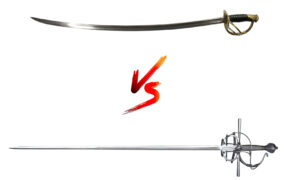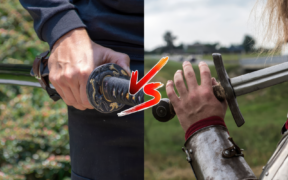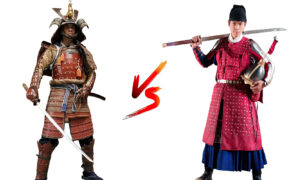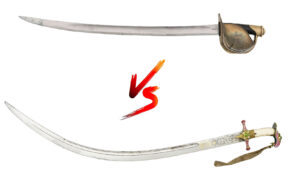Our content features commercial links to our products, committed to transparent, unbiased, and informed editorial recommendations. Learn More
Sword vs Saber: Differences, Types, Design, History and Combat
NO AI USED This Article has been written and edited by our team with no help of the AI
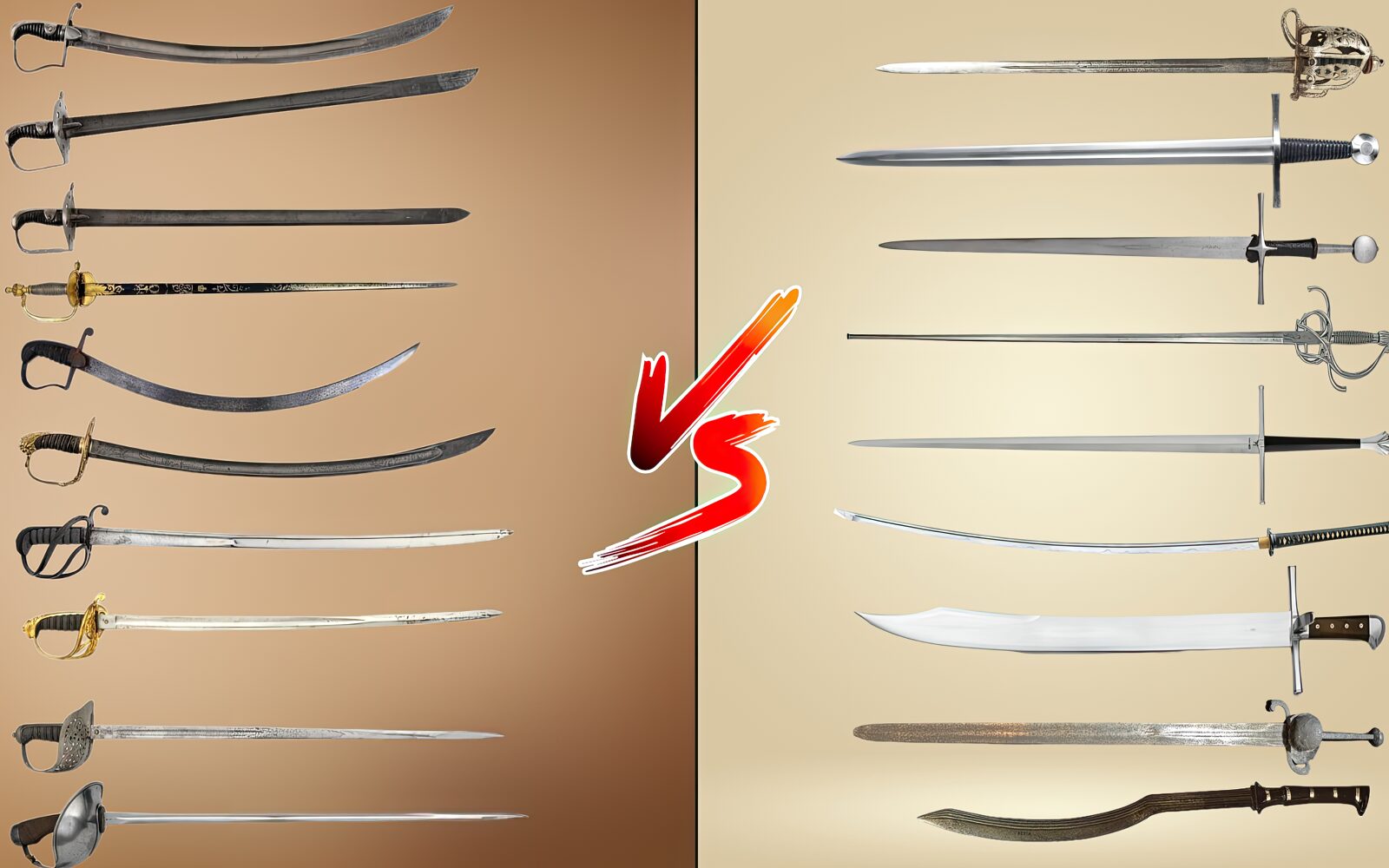
Swords and sabers are a group and sub-group of blades that changed throughout humanity with their unique purposes. With a legacy of over 5,000 years, swords have gradually given way to the saber in the last several hundred years.
This article will delve into their differences and explain how the sabor influenced the history of swords.
Glossary Terms
| Term | Definition |
|---|---|
Sword | Any type of blade longer than 18 inches (45 cm), wielded by one or two hands with a hilt smaller than its blade |
Sabre | Type of sword group featuring a single edge with a slightly pronounced or strong curvature usually held with one hand |
Saber | The American standardization of spelling introduced by Merriam-Webster (dictionary) in the early 19th century |
What is a Sword?
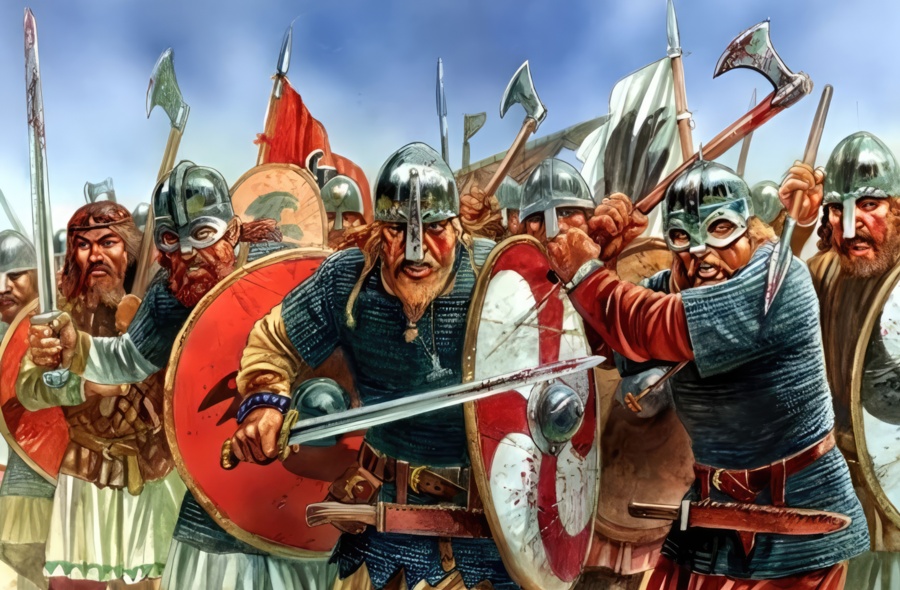
Swords have long been associated with history and are usually made from copper, bronze, iron, and steel. Their primary function was as an offensive or defensive weapon and a symbol of one’s social status.
Swords varied in size, ranging from smaller straight, double-edged short swords to bigger sidearms used with a shield. They evolved into a massive two-handed weapon, often featuring a curve and single edge.
What is a Saber?
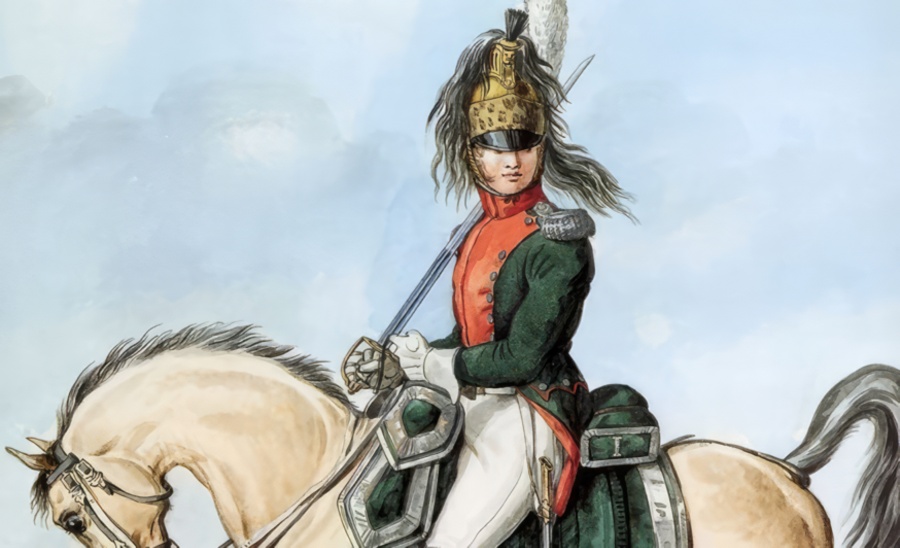
Sabers (under the umbrella term swords) feature a single sharpened edge with a thicker, dull spine. Typically seen with a curved blade, they excelled throughout history as a slashing and calvary weapon.
Often referred to as simply a sword, the saber represented curved-bladed sidearms used as dress swords or cavalry blades. Today, the word saber is a generic term for a Western European cavalry sword.
They generally relate to the European thin-bladed cavalry curved blades used during the late 17th century, becoming more dominant in the 18th century.




Terms, Characteristics, and Design Differences
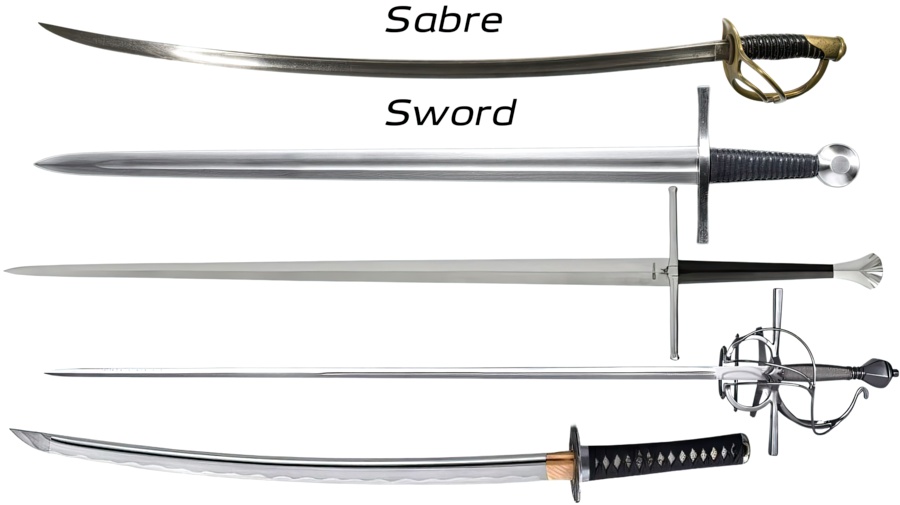
Sword comes from the Old English word sweord, Proto-Germanic swerdam, Dutch zwaard, Nordic sverð, and other similar terms that generally translate to sharp or sharp weapon. The term saber comes from the French sabre, Hungarian szablya, Polish szabla, and Turkic selebe, which translates to cut.
Blade
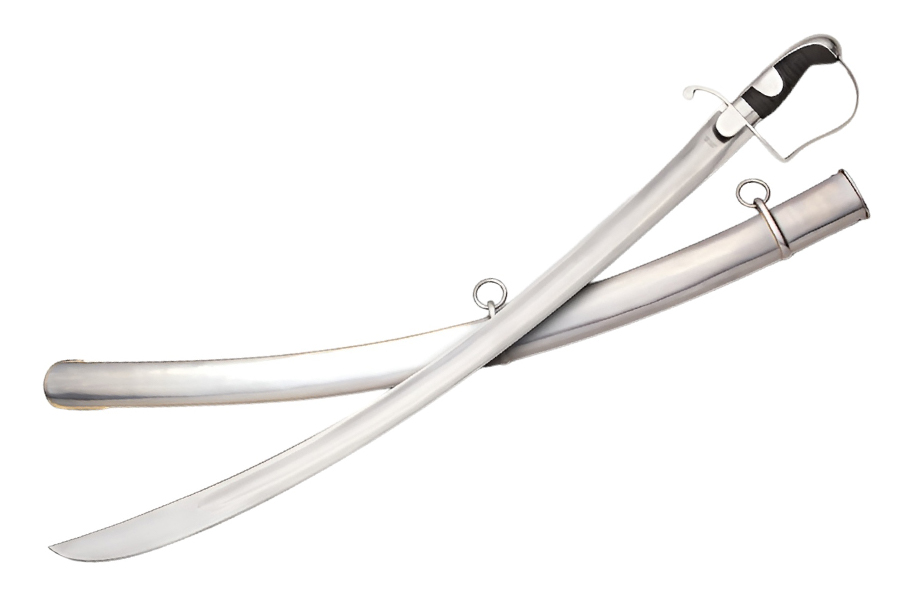
The blades of swords are made of high-carbon steel with double or single-edged variations with or without a curve. The weapon’s tip is used for penetrating thrusts, creating a gashing wound, or a cut-and-thrust combination maneuver.
The blades of various swords feature fullers throughout their center, modifying or reducing their weight. They can have a taper, an unsharpened ricasso near the hilt, or a needle-like rapier design practical for dueling.
Sabers feature a slight or strongly pronounced curve with a single-edged blade, often featuring a fuller near its unsharpened spine.
Some sabers, like the Turkish kilij, have a yelman, a thickened and broadened tip made for slashing strikes, while others have a sharpened back edge near the tip.
Hilt
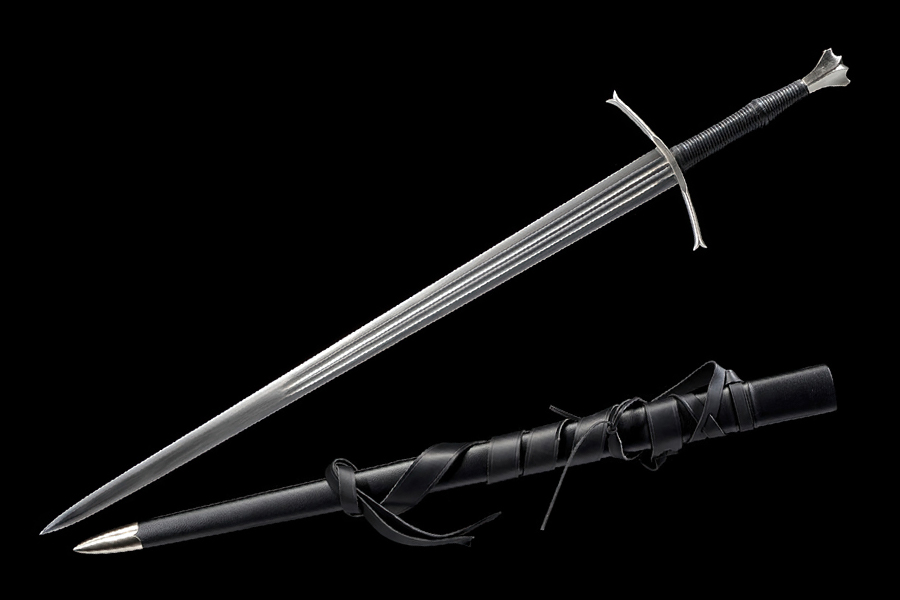
Swords can feature many hilt designs, coming in one or two-handed variations depending on the blade’s length and the weapon’s purpose. Some fit both hands neatly, while others offer a gap between them for versatility.
A sword’s hilt can offer limited protection to full-hand protection. Most European medieval swords featured a cruciform crossguard with straight quillons, a narrow bow-tie design, and broadened s-shaped full gauntlet variations.
Swords feature pommels that tightly secure the tang underneath the handle, balancing the weight. They can be used for bashing or as a hand back-stopper. On the other hand, Sabers can feature pommels, but most have a backstrap.
Sabers feature a simple hilt with a one-handed grip, perfectly fitting the user’s hand. It offers protection with various hand guards such as baskets, ribs, metal rounded quillons, ear lobes, and a knuckle guard.
Size and Weight
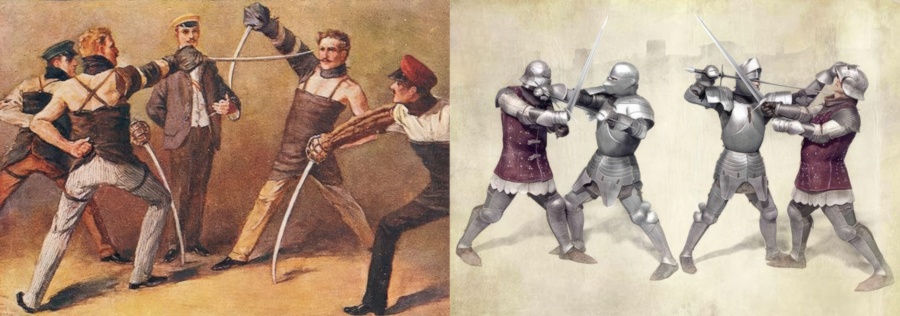
Swords come in various sizes and weights, depending on their purpose, whether to excel in momentum or mass behind their strikes. The main difference is whether they are one or two-handed.
Generally, double or single-edged swords fall between 24 and 59 inches (60 to 150 cm) long and are referred to as great swords. Blades shorter than 24 inches are known as short swords and fall into a different category altogether. Their weight ranges from 1.1 to 6.61 lbs (0.5 to 3 kg).
Sabers can vary in length but mostly in weight, depending on the type of blade. A cutlass would be used for sturdy cutting, while a light cavalry blade would be used for swift strikes. Sabers often range between 29 and 39 inches (73 to 100 cm) and weigh around 1.7 to 2.6 lbs (0.7 to 1.2 kg).
History and Significance
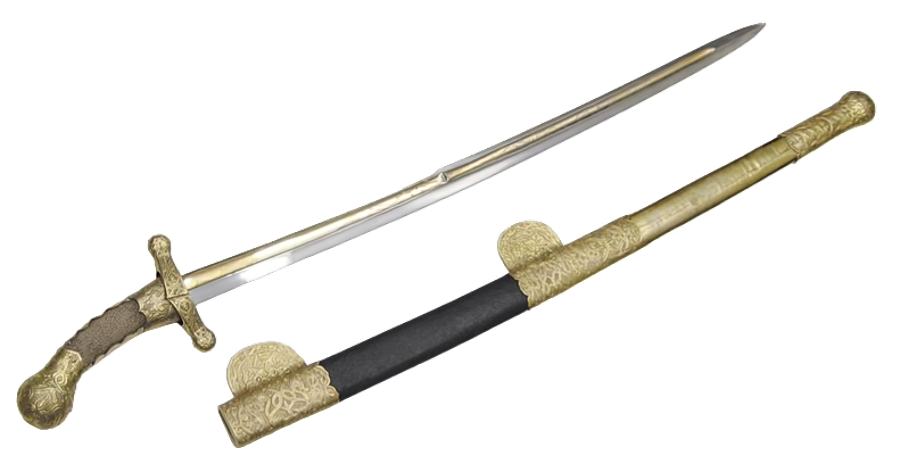
Swords made technological advancements, replacing the dagger or sickle with a bigger warfare tool. They first appeared around the 30th century BCE, with some of the first proper blades being bronze swords from the 16th century BCE. Due to their meticulous crafting, they symbolized wealth, status, honor, power, and knowledge of contemporary martial arts.
The first types of swords had double edges, but with time and economic factors, blades with a single cutting edge appeared. The first example is in China, where the single-edged dao saber replaced the double-edged jian sword.
Curved swords with long blades, such as the katana, existed, but mainly, one-handed cavalry sabers were dominant in East Asia. They expanded through the West Asian steppes and the Middle East and eventually to Eastern and Western Europe.
Sabers were used effectively in combat from the 10th century in Asia and throughout the Middle Ages in Europe. Beginning in the 17th century, they were used during the Thirty Years’ War (1618-1648) and became dominant around the 18th century, especially during the Napoleonic Wars (1799-1815).
These dominant curved swords, often used in cavalry, were effective cut-and-thrust weapons that excelled against unarmored opponents. Today, they are the epitome of the swordsman, used in modern fencing and ceremonial military events.
Combat Preference
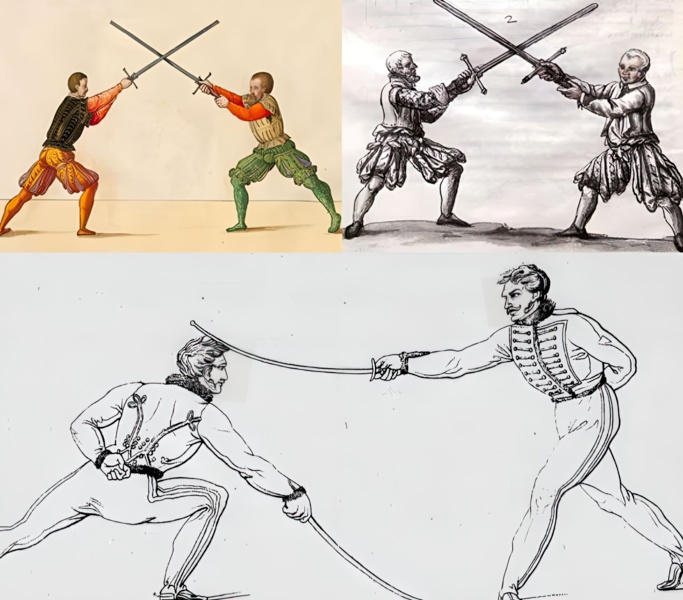
Swords are used in different combat scenarios based on their design. Some can be two-handed, used as primary weapons with a reach advantage, while one-handed swords can hold a shield for protection.
Some swords excel in powerful slashing strikes, while others are made for cutting and thrusting. Wielders rely on the mass of some swords to inflict damage, while others rely on the weapon’s agility and speed to win a duel.
Swords function differently than sabers despite their single edge. Dadao swords and falchions, for example, are single-edged swords with no curve or have a much broader blade, making them powerful cutting weapons in sacrifice for their skill.
Sabers possess agility, practicality, and the need for no armor as their core combat preference. They had a curve that made their blade edge alignment easier to achieve, which dealt deep gashing wounds, but they had a tip that could also be used for thrusting. This depended on a saber’s curve level, such as a radically curved Persian shamshir made primarily for slashes and cuts.
Sabers were popular cavalry weapons because of their curve, allowing for smoother downward strikes. European cavalry sabers had slimmer blades used on lighter cavalry combined with a pistol or a heavier saber used by hussars. They were cut and thrust weapons and, despite having a straight or curved blade, were generally used with the same motions.
In modern swordsmanship, such as fencing, the epee is used for thrusting, while the saber is still used for the cut and thrust despite being taught in a contrapointe (not with the tip).
